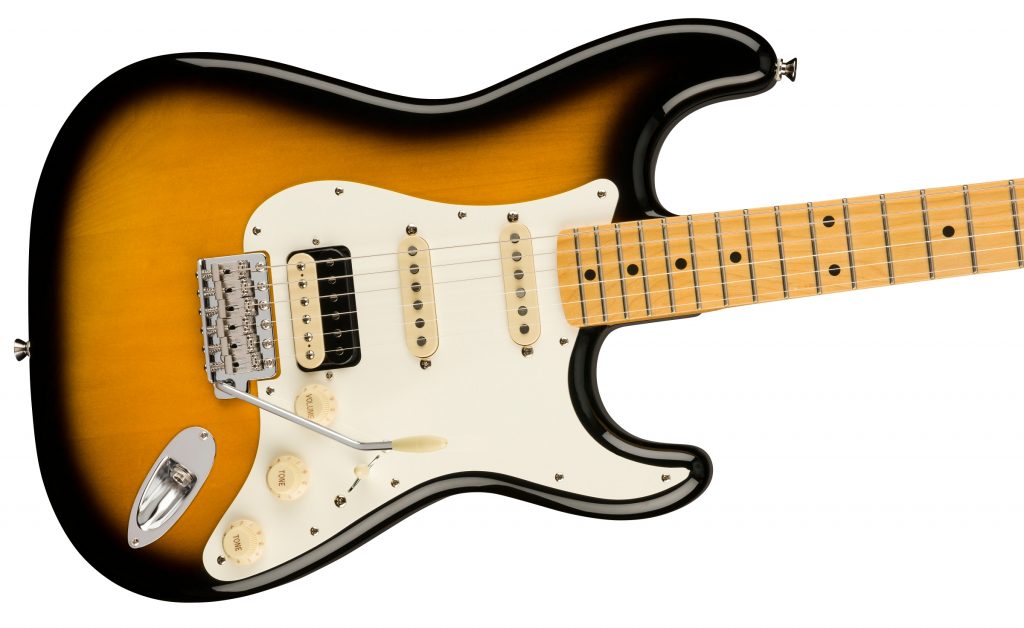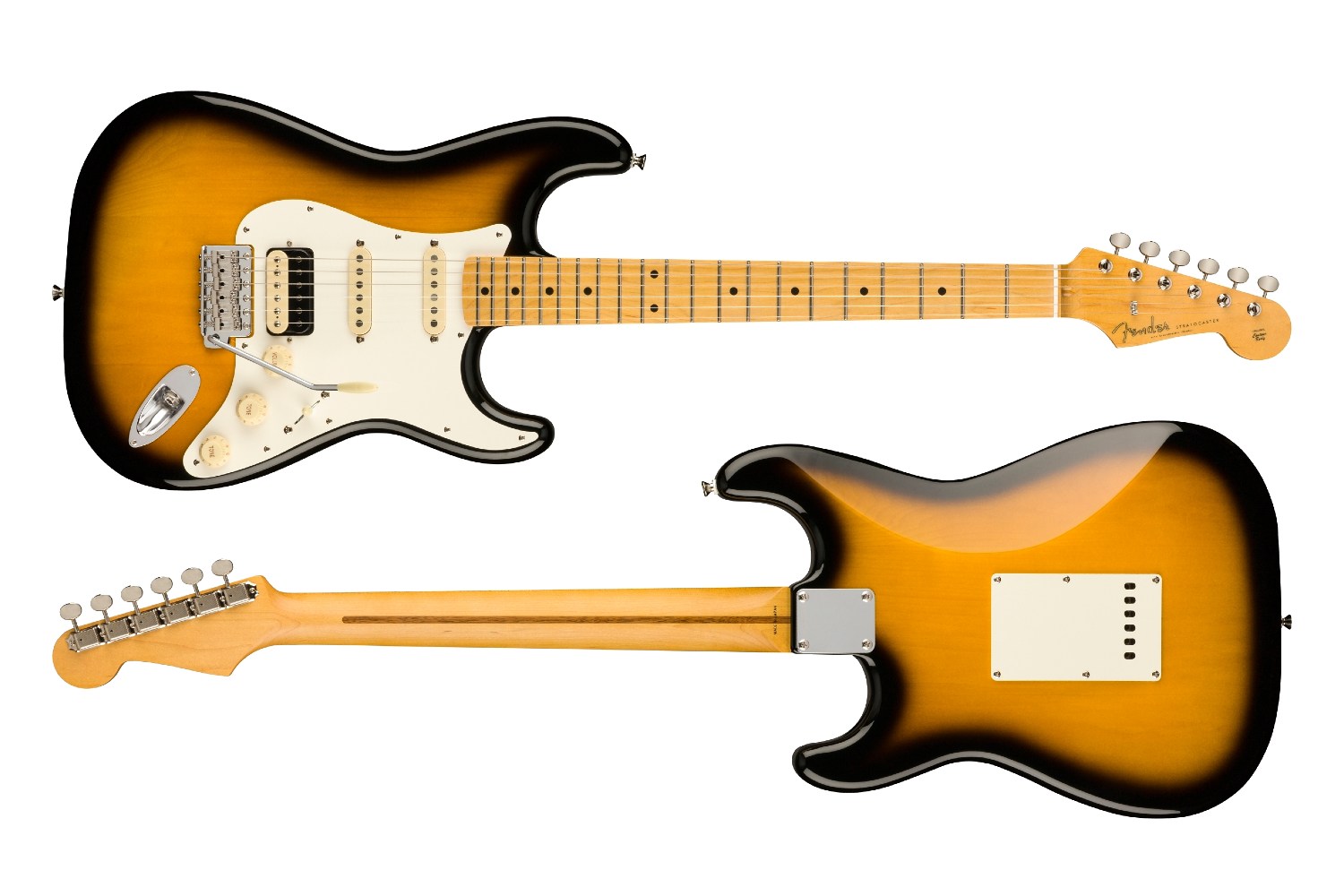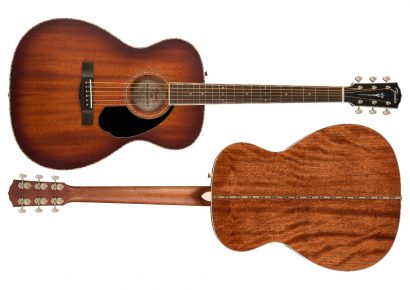Fender Australia | RRP: $2,599
What makes a Stratocaster a Stratocaster? If you ever get the chance to pick up a real vintage example from the ‘50s or ‘60s, it’s a much different guitar to a modern model like the American Ultra. And so it should be, because there have been a lot of enhancements in guitar playability since the ‘50s. And yet there’s so much about those early Strats that is worth retaining.
Read more product reviews here.
The Fender JV Modified Stratocaster HSS is unquestionably a ‘50s-style Strat with an apparent design brief of ‘make it as ‘50s-Stratty as possible but in a way that doesn’t freak out a 2022 player.’ In fact, the JV Modified Series as a whole takes cues from the now highly sought-after Japanese Vintage reissues from the early ‘80s when Fender underwent an ownership change and was not yet set up to make guitars in the USA. Those Japanese Fenders were the bee’s knees back when they came out and they’re still loved today.
The most notable departures from a typical Strat spec are the choice of a Basswood body instead of Alder or Ash, the addition of a humbucking pickup in the bridge position (with a push-pull pot on the bottom tone control to switch it to single coil mode) and a satin-finished 9.5” radius Maple fingerboard with medium jumbo frets. Basswood is said to be an even-toned wood often associated with Japanese shredder guitars of the 80s, but it’s been successfully used on selected Strats for a long time now, particularly those from Fender Japan. And the 9.5” radius fingerboard (as opposed to an unforgivingly round 7.25” radius with tiny frets on a real ‘50s Strat) with those bigger frets is designed to make it easier to bend strings without the note choking out on an adjacent fret. The satin neck is also a nice touch, giving this Strat a feeling of being worn-in. (My Fender American Vintage Reissue ’62 Strat is 10 years old and the neck still feels slick and sticky, which does impact playability).
Pretty much everything else about this Strat is ‘50s-approved. The neck is quite thick with a soft “V” profile. The finish is two-tone Sunburst, because the three-tone version with the red wasn’t a thing this early in Strat history. The neck has 21 frets, not 22 like many Strats in the range today. And the tremolo system is a vintage-style six-screw unit, not a two-point fulcrum model.

The two single coil pickups are pretty standard Strat fare; true single coils, with all the 50-cycle hum you would expect once you turn the gain up. The only info Fender gives about the humbucking pickup is that it’s ‘Hot Vintage Alnico.’ My ears say Alnico V because it’s not as raucous and rough around the edges as Alnico II to my ears. What’s consistent across the pickup selections though is a zippiness and clarity that is pretty unmistakably ‘50s Strat.’
In comparison to my ‘62 Reissue the sound is thinner, punchier, and brighter, with more ‘string zing.’ The neck pickup has enough punch and treble to function as your main pickup if you’re more into the SRV-style sound, and the 2 and 4 settings of the selector switch thin out and get almost acoustic-like. And in single coil mode, the bridge pickup sounds consistent with the other two, with a similar bright clarity and more or less consistent volume level with the other two pickups. It’s great for clean styles like country.
Pop it into humbucking mode and that volume balance goes away because you’ve unleashed a rock monster. It’s not an overly hot pickup but it sounds perfect for screaming leads and punchy power chords. It cleans up nicely from the volume knob, but you’ll probably want to keep it cranked a lot of the time because it sounds so good. A big part of this is the midrange punch that the humbucker mode imparts in comparison to the neck and middle single coils. And unlike many that only really shine at full gain, it’s one of those humbuckers that sounds great when played clean or moderately dirty.
Oh but we’ve gotta talk about the playability! I’ve reviewed a lot of Strats over the years. This is the easiest, fastest, most comfortable playing one this side of the American Ultra series. Wide chord stretches feel like no problem at all, and you’ll be zipping all around the neck without a second thought. It’s one of those guitars that feels like it makes you a better player (when really what it’s doing is removing some of the obstacles that get in the way of your playing). It’s super, super nice.
The bridge on the review model was set up to float, and it returned to pitch quite well after I spent some time stretching the strings, but this is not a Floyd Rose, which is to say you’re gonna have to retune between songs if you do a lot of whammy bar work. It’s a bit of a trade-off; do you want your ‘50s-vibed Strat to be truly ‘50s-vibed, or do you just want it to look that way? A Fender Japan Hybrid ‘50s may be more your speed if you’re more of a wild whammy whacker.
There are so many different Strats that it’s hard to say ‘this is the ultimate one,’ but it’s one of the best choices you can make if you’re in the market for a really Stratty-sounding Strat with great playability and chunky humbucker tones.

Head to Fender for more information.

